
by PAUL COLLITS – AUSTRALIAN racial division could dramatically escalate if the governance of the nation is handed over to an unelected racial minority, according to former High Court Justice Ian Callinan.
He said his greatest fear was that the upcoming Voice referendum would revisit Australia’s pre-1967 days of division that the previous referendum had done so much to subdue.
- It will be a voice for the activists. This much we know.
- All of this should raise massive alarm bells among Australians.
- The “No” case needs to win big, not just win.
Mr Callinan said the upcoming referendum had a “nasty” feel about it. He described its tone as condescension, paternalism and presumption.
HYPED
The Voice referendum resembles the COVID vaccine roll-out – not needed, not likely to be effective, experimental and dangerous – and is being hyped and lied about, more or less, by the same group of people.
Saying “Yes” to the Voice proposal is a little like rolling up your sleeve for Australia. No doubt, this is why Pfizer is so cheerily supporting the Voice.
It is to be hoped that we don’t all fall for the lies and propaganda this time.
The Voice is also, like so many of the Albanese Government’s apparent priorities, a solution looking for a problem. It is a grand opportunity for the in-crowd to virtue signal like never before.
It is making the “love is love” campaign of 2017 look tame in comparison. Hence the inevitable appearance of national sporting bodies and “elite athletes”, all lining up to show just how hip they are.
It is an unmissable chance to make their opponents appear deplorable and racist. For mine, this was the reason Albanese did it.
For the record, here are the words of the upcoming referendum: “A Proposed Law: to alter the Constitution to recognise the First Peoples of Australia by establishing an Aboriginal and Torres Strait Islander Voice. Do you approve this proposed alteration?”
HARMLESS?
Sounds pretty harmless and a good idea, surely. Well, this week I attended a seminar on the Voice organised by The Samuel Griffith Society in Brisbane, to dig a little deeper.
The speakers were Gary Johns (former Keating Government Minister and author of the masterful book The Burden of Culture, Quadrant Books, 2022), the estimable Warren Mundine, former Senator Amanda Stoker and the Hon Ian Callinan AC KC. Gary Johns and Warren Mundine are members of the Recognise a Better Way committee, aka the “No” case.
Some familiar themes emerged, and some less known and surprising facts.
The “not needed” theme came up a lot. Warren Mundine referred to the existence of more than 1000 existing consultative Indigenous groups across the country. (I realise you are probably thinking, “only a thousand?”).
An Aboriginal woman put it to Gary Johns this week, “didn’t we do this in 1967?”
Stuart Wood KC said the voice was “totally unnecessary”. It was noted that there are currently eleven Aboriginal MPs across Australia.
There are many Indigenous local councillors as well. Many and increasing. Warren Mundine’s figure was 200. (He began his own political career as a councillor at Dubbo).
HUNDREDS
These hundreds of Aboriginal organisations already provide a voice for their people, no doubt.
Now there will be a multiplicity of voices. Saying contradictory things. In many cases, second guessing decisions already made with Aboriginal input.
Various speakers referred to all the various inquiries over the past 30 years into prominent and painful Aboriginal issues. All provided opportunities for Indigenous input and in most cases, governments implemented the vast majority of recommendations arising from these inquiries. As Johns said in relation to each of these, “Aborigines had a voice. They told their truth”.
Another theme was that this referendum would “destroy reconciliation”. A common phrase was “divisive”. Why should one racial group get two goes at representative democracy? And the rest of us, only one. (What with the UniParty in charge, many of us may well feel we don’t even have one).
Gary Johns confirmed what many looking at the polls are noticing. That the Yes vote is “big and soft”.
Well, now it appears to be not-so-big and soft, and shrinking fast. He also paid tribute to Mundine and Jacinta Price, who have “copped a lot”. Conservative Aborigines, like conservative African Americans, always do. They get called very nasty things.
Johns stressed that the very referendum question was misleading. “Recognition” it ain’t.
He underlined the fact that the emphasis only on a “Voice” was also misleading. It will be about three things – voice, treaty, truth. Along with a so-called “makarrata commission”, an “instrument for payback” (as Johns called it) to determine the “truth”.
All of this should raise massive alarm bells.
Treaties, of course, are already being rolled out across the land. The Queensland LNP, always to be relied upon, helpfully supported a treaty just this past week in the parliament there.
PROBLEMS
Johns also pointed to the need to work locally, not nationally, in relation to Indigenous problems. Many Aborigines used to refer to ATSIC (Aboriginal and Torres Strait Islander Commission, 1990-2005) as an acronym for “all that shit in Canberra”.
Well, with the Voice, it will be raining very hard down upon us all. Then there is the danger of a fourth arm of government emerging by stealth (joining the parliament, the executive and the judiciary).
The Voice will offer endless opportunities to “delay and grandstand”. To do deals in the Senate with the Greens and others. They must already be licking their chops.
The likely model for the voice was discussed. The most talked about structure is the so-called Calma Langton model.
This will involve 24 appointees (not elected, of course) chosen from 35 regions. To head off to the parliament to get funds for their own organisations. Just like other interest groups that hire lobbyists or form industry associations.
It will be a voice for the activists. This much, we know. Yet many questions about details remain unanswered.
Gary Johns also spoke about the “No” case’s strategy. It would be “softly softly” at first. It would focus on the reality of “constitutional change”. Not a minor change, then.
The strategy would focus on four States, remembering that the referendum has to win in the majority of States.
NSW and Victoria are seen as the hardest places to win for the “No” case. Johns described Victoria as being in “outer space”. He was being kind.
Johns also said the “No” case wants to win big, not just win. He also has a strategy for longer term, based on practical collaboration at local level and dialing back the effects of “20 years of educational brainwashing” in relation to Indigenous issues. Including the way they are framed.
The message from the “No” case has to be positive, and to counter the smears, explicit or implied, from the Aboriginal industry: “Recognise a Better Way, like most Australians, has a deep sympathy for Aboriginal and Torres Strait Islander people. We understand their desire for recognition and to help those who are in need.”
UNEASE
Above all, the “No” case would seek to tap into the growing unease emerging in the electorate, summed up in the phrase “this is bigger than we thought”.
Warren Mundine gave an informal presentation, drawing on his long experience over thirty-plus years in Aboriginal politics.
As always, his focus was on economic development, investment and positive stories to aid the advancement of those Aborigines the Voice will ignore. He also spoke of the failures (and a few successes) of past attempts at an Indigenous Voice.
The take-out – this is nothing new. It is same-old same-old. Except this time, infinitely more dangerous. He also noted that each effort (such as the aforementioned ATSIC) was eventually dismissed by local Aboriginals because the radicals took over.
Mundine spoke of his work with the Abbott and Turnbull governments, and his creation of an indigenous business economy from an initial public investment of a few million dollars that is now worth over $8b.
In contrast, what he called the elephant in the room was the fact that most Voice supporters “live off government dollars”.
Mundine’s life’s work has been to get the Indigenous people off government dollars. I guess he can see his life’s work potentially going down the drain with the Voice.
He noted that the Voice had a recent budget allocation of a staggering $380m. This will do nothing for the Aboriginal business economy, nothing for remote communities and nothing for those in the direst need.
Most worryingly, Mundine spoke of his own experience running mining companies. He employs more than 1000 Aboriginal employees.
Typically, Indigenous groups negotiate land rights, sacred sites and environmental issues locally with the companies. They fear that a top-down Voice will override traditional owners and well worked-out processes. What an irony. Warren Mundine said his workers “were nervous”. They should be.
Finally, he reflected on the success of the 1967 referendum and its emphasis on equality. He noted that, within five short years, all of the discriminatory laws and many practices had gone. He concluded that Aborigines had “won many battles” under existing governmental structures.
Amanda Stoker focused on administrative law and the likelihood of the Voice adding further complexity and damaging economic development, not least in relation to projects (like mining) that were (ironically) of major potential economic benefit to Indigenous communities. Mining is the best thing that has ever happened to such communities, I would think.
LITIGATION
Stoker confirmed that the Voice would lead to a massive increase in litigation, moving power further away from elected politicians to unaccountable judges. She noted the core contradiction in Albanese’s position. The Voice was “just a little bit of consultation” but “would be heard”. Both things cannot be true.
She dwelled on sovereign risk and our reputation as a safe investment destination. She questioned the benign wording of the proposal – that the Voice “may make representations”.
She noted the harmful broadening of the notion of “standing” before the courts since the 1980s and foreshadowed further broadening post-Voice, allowing activists to petition for judicial reviews of government decisions and, potentially, achieving standing in those reviews.
Such litigious processes could be repeated over and over. Hence the phrase used by intended seminar speaker Tony Abbott – who was attending the late Tony Staley’s funeral in Melbourne and hence unable to appear – “gumming up the government”.
The Voice, of course, would provide standing for the Voice in every area of decision-making, since they, like other, voiceless citizens, can have a legitimate interest in all these areas.
The rest of us just don’t get a special, separate say. They may “make representations” … “on any matter”. On any matter. Stoker used the word “lawfare” quite a bit. Moreover, who would pay for all the litigation? Yes, you guessed it.
Finally, Stoker spoke of the likelihood of the increased politicisation of appointments to the High Court, where much of the likely, endless Voice-based litigation would end up. She referred to the Americanisation of the third arm of government. Would the Voice get a direct say in judicial appointments, for example?
Ian Callinan wound things up. He lamented all of the company boards, charities and law societies telling their members how to vote. He backed Amanda Stoker’s comments about the lowering of the bar in relation to standing before the courts.
He worried about the likely direction of the current High Court post the Love case, which gave non-Australian Aborigines a right not to be deported.
DISPUTES
Callinan wondered about the Voice deciding on disputes between different Aboriginal groups. He anticipated a rise in litigation by groups claiming not to have been “heard” by the Voice.
He bemoaned the fact that a body making “representations” would not, itself, be representative. He finished by quoting William Gladstone: “Don’t mistake the strength of your opinions for the strength of your arguments.”
We do seem to have an opinioned class with few compelling arguments thrusting their opinions down our throats, and abusing us for not simply rolling over. All that shit in Canberra, you might say, along with the ground-truthing Aborigines who were so perceptive about ATSIC back in the day.
The past few weeks have given us a taste of all that is to come in the era of the Voice and all of its relentless cheer-squadding.
We had a fringe national women’s cricketer saying we shouldn’t play (men’s) test cricket on Australia Day.
We had the national press (at last) noticing that Mt Warning in the Northern Rivers region of NSW had been rendered off limits to Australians. (Naturally, the inevitably pro-Voice Matt Kean was involved in shutting Mt Warning National Park down, while NSW Environment Minister. Under the cover of COVID). We are being locked out of our own country, on pain of $10,000 fines.
And we have had the pretence that one of the greatest art scams in our history, involving whitey interfering in Aboriginal art creation for profit, was a case of “nothing to see here”.
This is the case of APY ACC, an Indigenous art company in northern South Australia, so forensically investigated recently by The Australian’s Greg Bearup.
Not needed. Dangerous. Ineffective. The Voice is coming to a town near you.
Changing the Constitution is no small thing. Love might be love, but at least same sex marriage didn’t make me do anything (yet). The gays haven’t come for reparations. (Yet).
The governance of the country is possibly about to be handed over to an unelected racial minority. And it still won’t assuage the white guilt of the political class for what Gary Johns called the “original sin” of settlement.
But it will trash the joint.PC


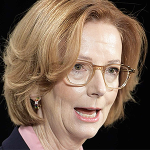
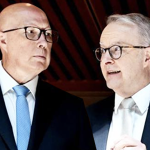
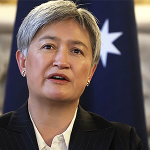
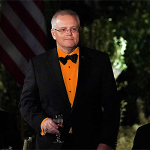
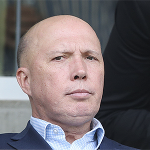

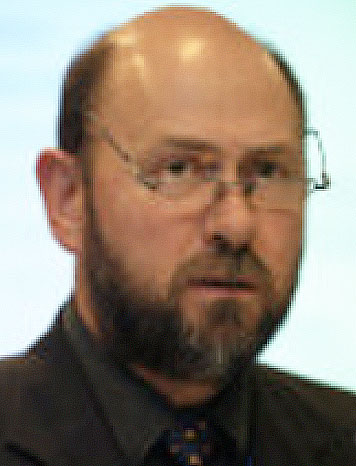




1. Why is the Albanese Labor Government revisiting via Parliamentary Committee the United Nations Declaration on the Rights of Indigenous Peoples – UNDRIP?
Australia, New Zealand, Canada, United States and others refused to sign it years ago.
2. Why wont the Federal Government arrange for auditing of the $30 Billion plus of taxpayer’s monies being handed to Aboriginal organisations every year, and the revenue received tax free from mining royalties and other sources?
Who are the beneficiaries, and why are they?
Ask why the Liberals allowed a Marxist to join them;
https://www.theunshackled.net/australian-politics/is-marcia-langton-still-a-marxist-why-hasnt-anyone-asked/